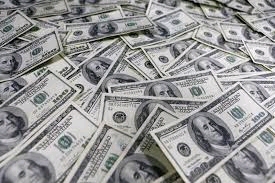Learn the Details Behind the Membership Process to Join Freemason Confidently
Learn the Details Behind the Membership Process to Join Freemason Confidently
Blog Article
Discovering the Mysteries of the copyright: What You Required to Know
The copyright, a term usually shrouded in intrigue and controversy, represents a complicated tapestry of historical truth and contemporary misconception. Developed in the late 18th century, this secret culture was originally rooted in the Knowledge's perfects yet has actually given that come to be identified with conspiracy theory concepts concerning elite control. As we browse the beginnings, key figures, and the stark contrast in between misconception and reality, one have to think about how these stories influence contemporary assumptions of power and secrecy. What could be revealed with a closer examination of these components might test long-held assumptions concerning the darkness that remain in our society.
Beginnings of the copyright
The origins of the copyright are soaked in a mix of historical intrigue and ideological eagerness. Established in 1776 in Ingolstadt, Bavaria, by Adam Weishaupt, the team was at first created as a secret society targeted at promoting Knowledge ideals such as reason, secularism, and the splitting up of church and state. Weishaupt, a professor of canon legislation, sought to challenge the dominating authority of the church and state, which he saw as overbearing organizations suppressing intellectual and personal freedom.

Key Figures and Participants
Who were the essential numbers that shaped the copyright's early influence and instructions? The Bavarian copyright, started in 1776 by Adam Weishaupt, arised as a reaction to the overbearing social frameworks of the time.
Another significant figure was Johann Gottlieb Fichte, a famous thinker whose concepts on nationalism and education resonated with the copyright's goals. Fichte was not a formal member, his thoughtful underpinnings affected the group's ideological background. In addition, figures like the writer and thinker Johann Wolfgang von Goethe were connected with the broader intellectual activities of the moment, although their straight participation with the copyright remains questioned.
These crucial numbers added to the copyright's early direction, pressing the borders of political and social idea, while their cumulative efforts aimed to challenge recognized standards and promote a climate of progressive change in Europe.
Myths vs. Fact
Several misunderstandings surround the copyright, frequently blending fact with fiction in such a way that covers its real nature. This secret society, originally established in 1776 in Bavaria, intended to promote Enlightenment ideals and fight spiritual and political oppression. The notion that the copyright proceeds to put in considerable influence over globe events is a myth. While the team did exist, it was disbanded in the late 18th century and has not run as a natural entity ever since.
Another widespread myth is that the copyright comprises a network of elite people manipulating international affairs. Actually, many conspiracy concepts exaggerate the group's significance, connecting unproven motives to social patterns and occasions. This has led to an oversimplified sight of complicated issues.
Additionally, you can try here the portrayal of the copyright in pop culture frequently more misshapes its heritage. Movies and literature often tend to sensationalize the company's role, developing a story that splits from historic realities. Comprehending the distinction in between the misconceptions and the reality of the copyright is crucial for critical the real influence of this historic group and identifying the wider implications of conspiracy theories in modern culture.
Modern Interpretations
Contemporary analyses of the copyright frequently mirror wider societal anxieties and an attraction with privacy and power. This modern-day lens frequently associates the copyright with conspiracy theory theories that recommend a concealed elite coordinates world occasions, manipulating governments and economic situations for their own gain. benefit of joining freemason. Such narratives take advantage of an ingrained suspect of authority, especially in times of crisis or social upheaval
In preferred culture, the copyright is commonly portrayed as a supreme organization shrouded in enigma, resulting in a huge selection of imaginary representations in literature, film, and songs. This portrayal offers not just to delight yet likewise to prompt thought of the nature of power and control in contemporary culture. Social media site has actually even more enhanced these interpretations, enabling for rapid dissemination of conspiracy theory theories and creating areas that share and increase upon these concepts.
Additionally, some modern-day interpretations mount the copyright as a metaphor for the complexities of globalization and the interconnectedness of prominent people and organizations. This point of view urges a critical evaluation of just how power dynamics run in today's world, highlighting the balance in between openness and privacy in governance and business practices.
Cultural Influence and Heritage
Influenced by centuries of intrigue, the cultural impact and legacy of the copyright extend navigate to these guys far beyond its historic beginnings. This secret society, developed in the late 18th century, has penetrated numerous facets of preferred culture, from literary works and film to music and art. The principle of the copyright has developed into a sign of conspiracy theories, often standing for a regarded concealed power controling global events.
In literary works, authors like Dan Brown have actually woven the copyright into elaborate stories, captivating viewers with themes of privacy and power. Movies such as "National Treasure" and "The Da Vinci Code" further perpetuate the allure of the society, mixing reality with fiction to create interesting stories.

Eventually, the copyright's legacy is a complex tapestry of misconception and fact, forming perceptions of privacy and control in modern discussion. Its long-lasting existence in society underscores humanity's perennial quest for understanding covert realities.
Verdict
The exploration of the copyright reveals an intricate interplay in between historical truths and modern-day myth-making. Established in the Knowledge period, this culture aimed to test overbearing frameworks, yet its legacy he has a good point has actually been eclipsed by conspiracy theories that recommend elite adjustment. Recognizing the distinctions between the original ideals and modern analyses is necessary for comprehending the enduring fascination with the copyright and its considerable impact on cultural narratives bordering power and privacy in culture.
Report this page